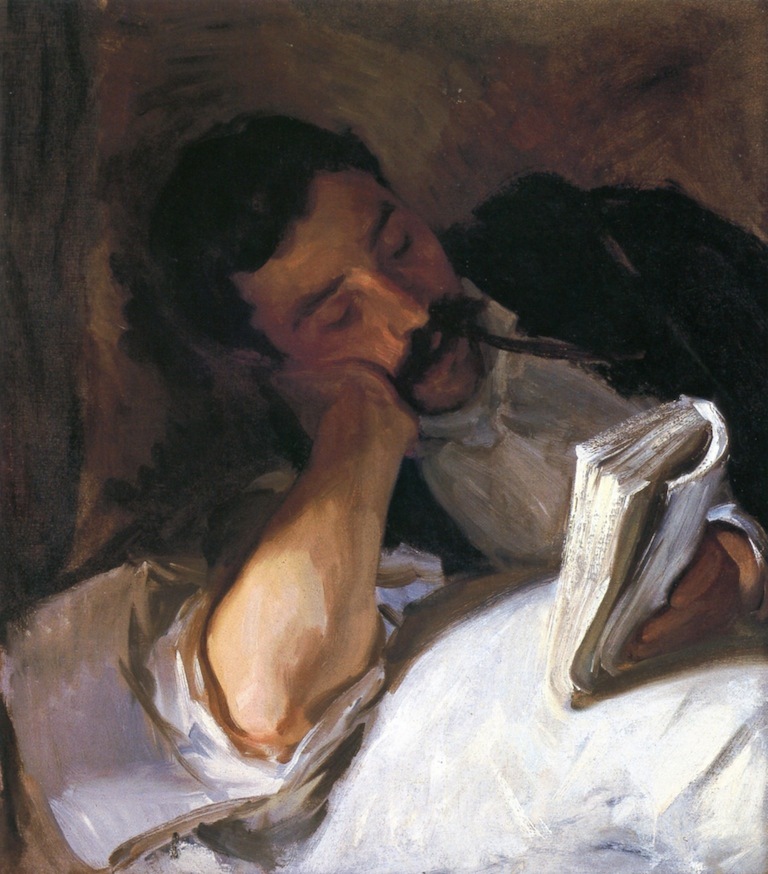
Wednesday
A friend the other day asked where my ideas come from, especially when I apply a passage from one century to incidents in another. Yesterday, for instance, I said that Trump confidant Roger Stone reminded me of a passage in Herman Melville’s Confidence Man. So how did that enter my head?
To answer, let me first explain my rationale for applying classic literature to contemporary life. Many of my beloved 18th century authors (my grad school specialty) proclaimed that human nature is a constant throughout history and that great literature captures these enduring truths. In great poetry we find “what oft was thought but ne’er so well expressed,” to cite Alexander’s Pope’s memorable phrasing, and Henry Fielding opens Tom Jones with the promise that human nature will be the only dish that he serves up in his novel.
Samuel Johnson, meanwhile, named Shakespeare as the greatest of all modern writers because he is “the poet of nature,” by which he means human nature:
Shakespeare is above all writers, at least above all modern writers, the poet of nature; the poet that holds up to his readers a faithful mirror of manners and of life…His persons act and speak by the influence of those general passions and principles by which all minds are agitated, and the whole system of life is continued in motion. In the writings of other poets a character is too often an individual; in those of Shakespeare it is commonly a species.
To be sure, I know that history has also changed in its views of, say, women and people of color. Figures like Virginia Woolf, W. E. B. Du Bois, Chinua Achebe, and Bertolt Brecht have detected prejudices in even our greatest masterpieces. I agree with Percy Shelley, however, who differentiated between what could be attributed to local customs and manners and what was enduring. When it comes to the latter, he said, the greatest authors are sometimes centuries, even millennia, ahead of their time. Shylock transcends Shakespeare’s conventional anti-Semitism and the Wife of Bath is more three-dimensional than medieval patriarchs could imagine in a woman.
Over my life and my career, I have read a large assortment of these timeless works, especially those by British, American, French, and classical Greek authors. Furthermore, teaching at a small liberal arts college, where we don’t specialize but teach a wide variety of courses, moved me out of my comfort zone and had me exploring literature from many different eras and countries.
But the question still remains how I make the connections that I do. Here it’s useful to describe how I inhabit the works that I read. When I am immersed in a work, it’s almost as real to me as romances were to Don Quixote. The characters really live, the actions really happen, the settings feel like actual places, and certain combinations of words lodge in my mind like unforgettable musical phrasings. In other words, I don’t see a wide gap between experiencing something in life and something in reading.
Since we use past experiences to make sense of whatever is happening in the present, this means that I naturally draw on my intense encounters with books. When things happen, in my own life or in the world, I regularly have feelings of déjà vu, only to realize that the previous incident occurred in a book. Sometimes I identify the book right away, sometimes I have to think for a while, the way one does when trying to place a familiar face or melody.
Once I’ve made the connection, the real discovery process begins. I know that great literature is always smarter than I am and so I just need to follow its lead to find out something interesting. It’s very important to return to the words on the page and let them lead me. My mind toggles back and forth between the text and my present day subject. I acknowledge the danger of narrowing the work to fit my prejudices, which is why I treat the words of the author almost as holy writ. If I were just to use literature to tell me what I already know (or think I know), then what’s the use of it?
Some of my connections are more successful than others. When a connection really works, however, as I feel it did with my application of Melville’s Confidence Man, then suddenly the world makes more sense. To cite other examples, I better understand resentment-crazed mass killers from having applied Beowulf to these tragedies; I have a deeper understanding of the impact of sexual harassment from my deep dives into Chaucer’s Wife; my grasp of the toxicity of male insecurity has been enhanced by grappling with Restoration comedies; and so on.
Exploring the connection then sets up a feedback loop. With increased understanding, my actions in the world change, giving rise to new experiences—which I then bring back to my reading. For instance, Twelfth Night tipped me off to various transgender community concerns years ago, but hearing stories and meeting transgender individuals has given new urgency to the play—which, upon reexamination, adds further complexity to what I have just witnessed.
I live better through Beowulf because I have many more tools for understanding a reality that always eludes complete understanding, especially when it involves life’s tragedies. Much delight comes from never knowing which work will pop up at a particular moment.
Literature, obviously, is not the only artistic aid we have, and I could imagine a blog entitled Better Living through Beethoven or How Michelangelo Can Change Your Life. But literature is my primary love so literature is what I write about.

